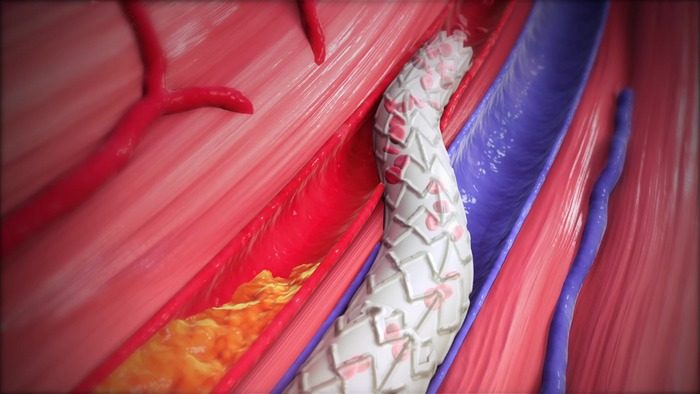Published on
Updated
Reading 3 mins.
In Western countries, diabetes, smoking and kidney failure can lead to severe peripheral arterial disease, and in the worst cases, lower limb amputation. But a new procedure of “arterialization” of the deep venous system could avoid this outcome.
Critical lower limb ischemia (CLI) caused by diabetes, tobacco and end-stage renal disease remains to this day the main risk of lower limb amputation. But according to an American clinical trial, a technique using transcatheter arterialization of the deep venous system could well reverse this trend and avoid amputation. The study was published on March 30 in the New England Journal of Medicine.
More than 75% of patients were able to avoid amputation
The American PROMISE II trial studied 105 patients with critical ischemia of the lower limbs treated with a minimally invasive system, designed to bypass blocked arteries in the leg and restore blood flow to the foot through the veins.

All patients faced amputation before the procedure and had non-healing sores on their feet, often referred to as diabetic ulcers.
The researchers thus discovered that
- 76% of patients in the study were able to keep their legs and had wounds completely healed or healed six months after the procedure;
- The patients’ pain was also significantly reduced;
- Freedom from all-cause mortality was 87% at six months;
Transcatheter arterialization of deep veins is a novel procedure for no-option chronic limb-threatening ischemia. It creates an arteriovenous fistula in the lower limbs with a covered stent, diverting oxygenated blood from the tibial arteries to the veins. https://t.co/4k9D7dcVQn pic.twitter.com/XuNVqDoq6L
— Davide Capodanno (@DFCapodanno) March 30, 2023
Hope in the face of rising diabetes
The trial was therefore conclusive for the American team, with the preservation of the member:
“Patients with longstanding diabetes and severe vascular disease of the foot often have no way to restore sufficient blood flow to the foot to heal the wounds. Thus, the majority of these patients would end up losing their limbs. ” testified Daniel Clair, lead author of the study. “The vein arterialization technique is not new: it was first proposed more than 100 years ago. But it was only after realizing that blood flow had to be directed through the veins in the foot that the limbs could be saved.”he explained
A “limb salvage” but also the whole quality of life of patients: according to the study, around a third of amputees become depressed or anxious and almost half of people amputee from a vascular disease will die in the five years.
“As these patients tend to be older and increasingly frail, the ability to do this through the skin offers the potential to provide this procedure with a minimally invasive approach, offering faster recovery and a lower risk of health issues. wounds and fewer disabilities”, said Dr. Clair.
“Now the majority of these patients can have their limbs and autonomy preserved thanks to this approach capable of reducing the risk of amputation for patients with vascular diseases.” did he declare.
The trial data has been submitted to the US Food and Drug Administration for medical device validation.
According to the World Health Organization, lower limb amputations are 10 times more likely in people with diabetes than in those without. And that number will likely increase as the number of people with diabetes continues to rise.
According to Public Health France, in 2004 and 2007, respectively 10,265 and 11,442 acts of amputation of the lower limbs (AMI) were recorded, in respectively 8470 and 9236 people with diabetes. In 2004, these were toe (44%), foot (19%), leg (19%) and thigh (18%) amputations.
